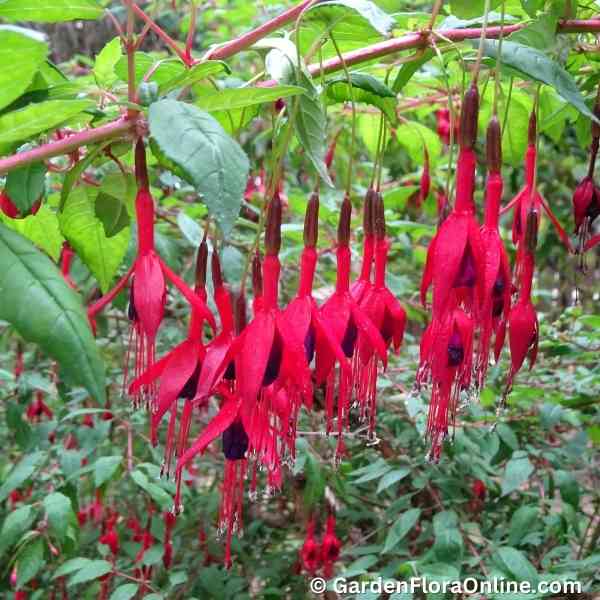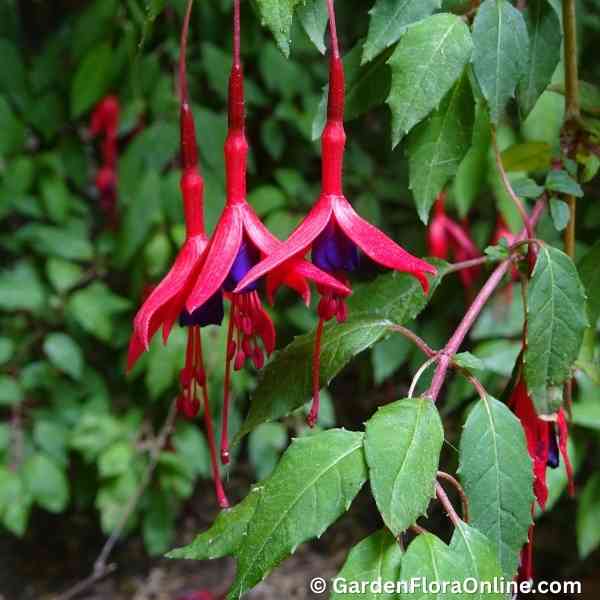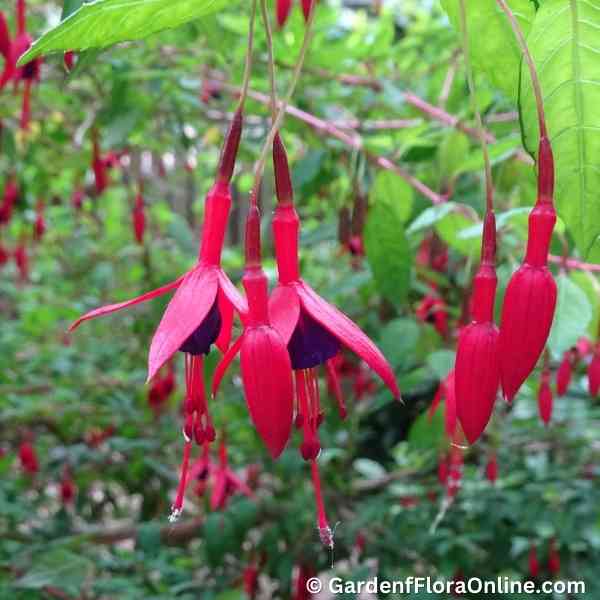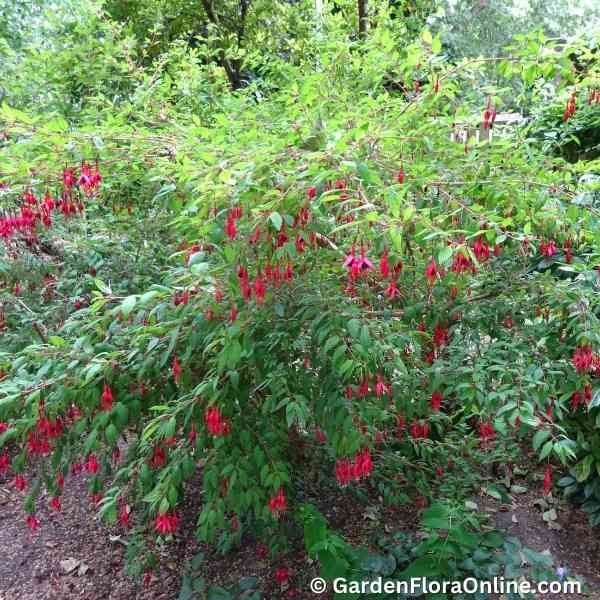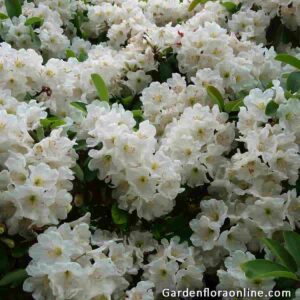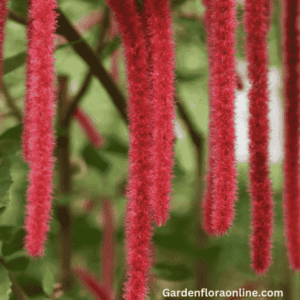Fuchsia magellanica (Hardy Fuchsia)
A medium-sized deciduous shrub admired for its graceful arching growth and vibrant flowers. In spring, its slender, glabrous twigs bear small, lanceolate to ovate leaves, 1.3–2.5 cm long, arranged in pairs or whorls of three. From early summer until frost, the shrub, which can reach over 3.7 meters in height, is adorned with nodding, solitary flowers on pedicels up to 4 cm long. Each flower features a deep red calyx tube about 8 mm long, with crimson sepals extending to 1.9 cm and encasing purplish petals, creating a striking and elegant display.
Cultivation: This hardy perennial thrives in shaded areas and is simple to cultivate. It is highly tolerant of salt exposure and responds well to pruning, making it an excellent choice for hedging, particularly in coastal regions. While it performs best in fertile, well-draining soil rich in organic matter, it can also adapt to heavy clay soils. Ideal conditions include cool, moist environments with partial shade. Fuchsia magellanica is versatile and can be grown in containers, hanging baskets, or window boxes. In colder climates, the plant may die back to the ground after a severe frost but typically regrows in the following season.
Etymology: The genus name Fuchsia is named in honor of Leonhart Fuchs (1501-1566), a German German physician and botanist who published a book on herbs with unusually beautiful woodcuts of plants. The specific epithet magellanica is derived from the Latin word Magellanicus, meaning “of or pertaining to Magellan,” referring to the Strait of Magellan in South America, where the plant is native.

